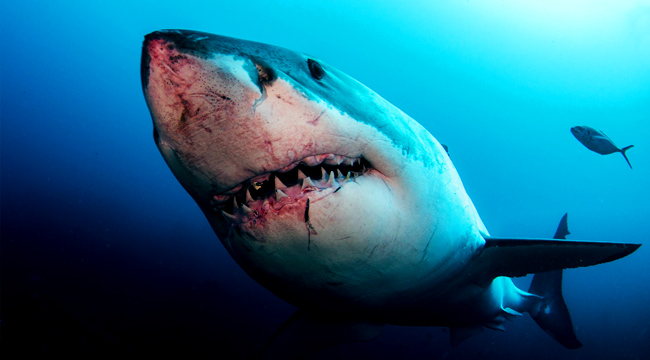
Southern California is a virtual shark festival this summer. Paddleboarders have found themselves in the middle of shark packs and terrifying attacks, like one where a woman lost her leg, are dominating local news. But why are sightings so high right now? And is this a new state of affairs?
Before we get too far into this, there’s a caveat: The sharks being sighted are mostly juvenile great whites. Juvenile great white sharks stick closer to shore for safety and for the smaller fish that live in shallower waters. While even a baby great white is nothing you want to run into, they’re far less dangerous than a full-sized one, which tend to be found in the open ocean.
There are, it appears, two reasons why there are more sharks, one good and one bad. The good one is that conservation efforts are working. Sharks are the apex predator of the oceans in many areas, and protecting them has been an important aspect of keeping the ocean ecosystems of Southern California and beyond in good shape. Efforts to protect seals, a major food source for the sharks, also help. In other words, there are more sharks because we’re actively protecting them, so hooray!
Yet protecting sharks is a lot easier than ending climate change, which brings us to the bad side of this coin. Great whites prefer a temperature range of the mid-50s to the mid-’70s in their water, and water temperature is, in part, what drives their migratory patterns. The Pacific’s temperature around Southern California has, lately, been sitting well within that range. So, the water’s nice, there’s plenty of food, and being in shallower waters keeps them away from their main predator — other great white sharks. Why would the sharks ever leave? Newsflash: They probably won’t.
Short of capturing the juveniles and releasing them somewhere with less inhabitants, there’s not much that can be done. It’s not like we can simply cool the waters to encourage the babies move down the shore a bit. Until we figure out how to get climate change under control, Southern California’s surfers, swimmers, and environmental protection officials are going to have to figure out ways for humans and sharks to share the beach.






